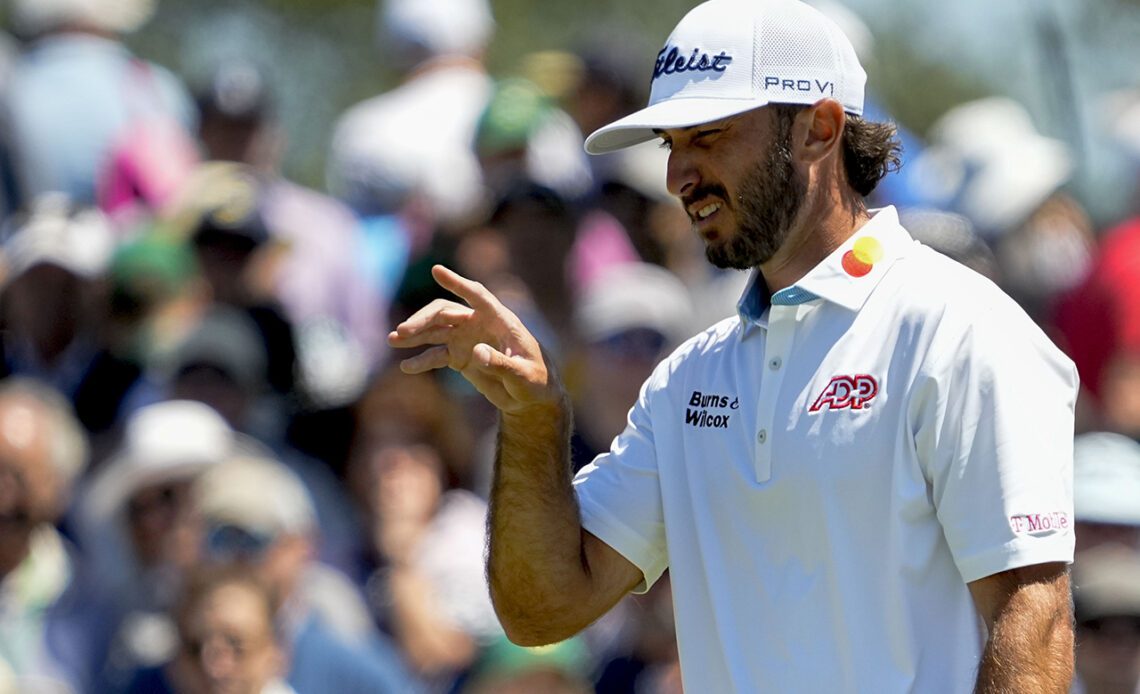Eight-foot putts are not typically stressful for PGA Tour pros, but the 8-foot par putt that Max Homa faced on Friday morning on the fifth at Augusta National had to be made if he was going to stay tied for the lead at the 2024 Masters. On the outside, he looked calm, but on the inside, he had to be feeling the pressure.
After both Tiger Woods and Jason Day finished the hole, the dance floor was Homa’s. With one foot on either side of his golf ball, he bent his right arm at about a 90-degree angle and held up his index finger and middle finger while staring at the hole. After backing up four paces, bending to take another look toward the hole, and then getting into his address position, Homa set his putter behind the ball. No practice strokes. He made a quick glance toward the cup, made his stroke and buried the putt.
“I mean, that is special,” said Colt Knost on the ESPN+ broadcast before Billy Ray Brown added, “That’s what champions do.”

Max Homa lines up a putt on the no. 9 green during the second round of the Masters Tournament. Mandatory Credit: Adam Cairns-USA TODAY Network
But what was Homa doing with his fingers, which appeared to be what Will Zalatoris, Viktor Hovland, Keegan Bradley, Tommy Fleetwood, Collin Morikawa, Adam Scott and a growing number of other PGA Tour pros are doing? Like those other pros, Homa uses AimPoint Express. This green-reading technique was developed by Mark Sweeney, the man who created the AimPoint putting line that broadcasters like Golf Channel, NBC and CBS used to show viewers a virtual path a ball needed to travel to finish in the hole.
“AimPoint Express is a dramatic simplification of what is a very complicated computer program to figure out how the ball goes from Point A to Point B and goes into the hole,” Sweeney said. “AimPoint y]=Express takes about 100,000 lines of code and converts it into the play feeling how much side tilt there is in the putt.”
What television viewers did not see during the broadcast of Homa’s putt on the fifth hole was that he had not only straddled his golf ball before he putted, but that he also stood halfway between his golf ball and the hole for a few seconds and tried to feel the tilt of the putting surface. Through practice and some training, Homa and other golfers can feel the difference between a one-, two- and three-percent slope to one side or another using their feet.
Then, standing over their golf ball, they extend an arm and hold up the number of…
..
Click Here to Read the Full Original Article at Golfweek…
